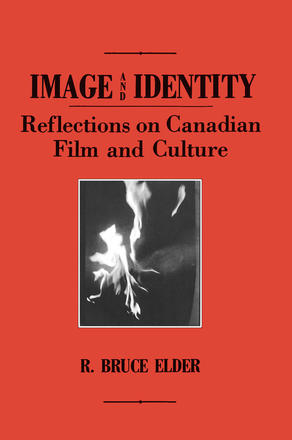
Description
What do images of the body, which recent poets and filmmakers have given us, tell us about ourselves, about the way we think and about the culture in which we live?
In his new book A Body of Vision, R. Bruce Elder situates contemporary poetic and cinematic body images in their cultural context.
Elder examines how recent artists have tried to recognize and to convey primordial forms of experiences. He proposes the daring thesis that in their efforts to do so, artists have resorted to gnostic models of consciousness. He argues that the attempt to convey these primordial modes of awareness demands a different conception of artistic meaning from any of those that currently dominate contemporary critical discussion. By reworking theories and speech in highly original ways, Elder formulates this new conception.
The works of Brakhage, Artaud, Schneeman, Cohen and others lie naked under Elder’s razor-sharp dissecting knife and he exposes the essence of their work, cutting deeply into the themes and theses from which the works are derived. His remarks on the gaps in contemporary critical practices will likely become the focus of much debate.
Reviews
"One of the better-kept secrets about Elder's past is his formal graduate study in philosophy. This training can no longer remain a secret to readers of this book. But, in addition, Elder reveals a firm grasp of Canadian history, against which he explains the country's philosophical and aesthetic evolution. His documentation . .. is impressively scholarly. "
- Cam Tolton, Canadian Book Review Annual, Number 135, 1989
"Image and Identity at its best is intoxicated with its subject and can take a reader straight into it. For those who share the same serious fascination with Canadian culture that Armour, Trott, and Kroker address in their books, Image and Identity will come as something of a revelation: that some Canadian films at least are not homeless orphans of a national cinema that keeps stumbling, but works very much at home in the landscape of Canadian art and thought. "
- Bart Testa, Globe and Mail, November 18, 1989
"Bruce Elder has written a work as ambitious, expansive and impressive as many of his own film projects. "
- Cantrills Filmnotes, Number 59/60, September 1989
"Daunting, dense, encyclopedic, exhaustive, exhausting, and often brilliant. "
- M. Yacowar, Choice, January 1990
"Within its compass, that of Canadian intellectual history, Image and Identity is a methodological correction to the state of Canadian film studies. Elder's study seeks to perform a contextual redress for Canadian film, negatively in the case of documentary cinema and realist fiction film, positively in the case of the avant-garde. He manages this task admirably, arguing clearly and in depth as a scholar fully conversant with the exemplary recent work in Canadian studies by Armour and Trott and by Wilden, Reid, and Kroker, and with the original sources their writing explores. "
- Bart Testa, University of Toronto Quarterly, Fall 1990
"Elder's work, combining a provocative thesis, a national and international philosophic and artistic context, and a thorough analysis of selected Canadian postmodern works, is a stimulus and a challenge to anyone interested in Canadian art and culture. "
- Paul Tiessen, Canadian Literature, Number 135